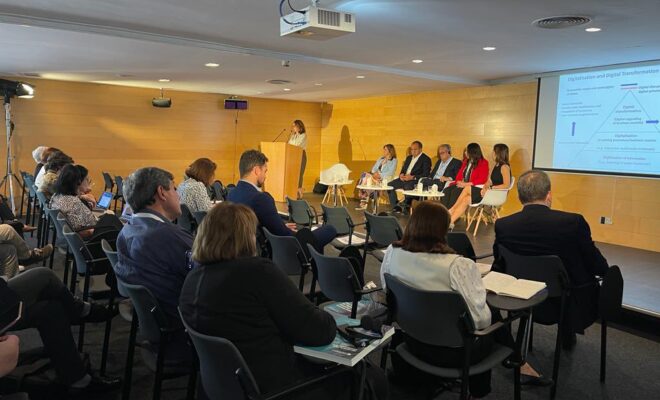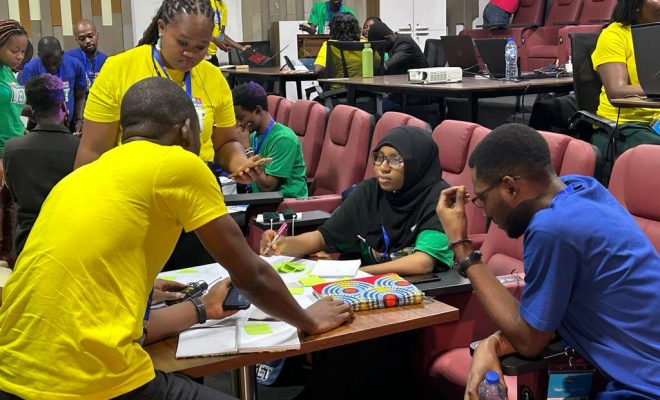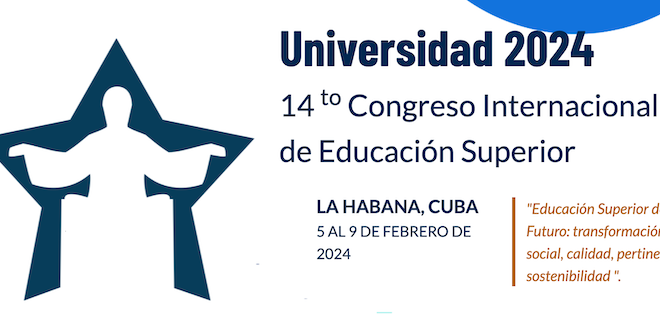ChatGPT, artificial intelligence and higher education

ChatGPT, artificial intelligence and higher education
- 25 April 2023 (updated on: 25 April 2023)
This blog post is based on the interventions of Dr Francesc Pedró, Director, UNESCO IESALC and Dr Axel Rivas, Director of the School of Education at the University of San Andrés and Academic Director of the Applied Education Research Centre San Andrés, Argentina, during the UNESCO IESALC webinar ChatGPT, inteligencia artificial y educación superior held on 17 April 2023. It also draws from UNESCO IESALC’s publication, ChatGPT and Artificial Intelligence in Higher Education—Quick Start Guide.
Achieving 100 million users within two months of being launched in late 2022 and with around one billion interactions each month, ChatGPT has brought artificial intelligence, or AI, to the world’s attention.
The impact of ChatGPT on higher education has been immediate and divisive, with a number of higher education institutions already banning it over fears of plagiarism by students. Although widespread, it is far from universal: around 40% of almost 1,300 participants in last week’s webinar hadn’t used it, which might be due to a lack of time, anxiety, or because it is not available in their setting.
“Explain ChatGPT in 50 words”
With a user-friendly interface, ChatGPT is an internet-based generative AI tool that people can interact with by asking it for data, analysis and even an opinion on just about anything: it has been trained not to answer questions that violate someone’s rights, promote discrimination, are offensive or deliberately seek to mislead. Furthermore, the data used to train ChatGPT only goes up to 2021.
The answers that ChatGPT provides are based on an impressive 570Gb of data representing 300 billion words – the equivalent of over 1.3 million books. ChatGPT uses natural language processing to learn from Internet data, providing users with artificial intelligence-based written answers to questions or prompts.
But why only take our (human) word for it? We asked ChatGPT to explain how it works in just 50 words. Here is its answer:
“ChatGPT is a large language model developed by OpenAI, based on the GPT-3.5 architecture. It can generate human-like text based on input prompts, answer questions, and perform a variety of natural language processing tasks. It was trained on a massive dataset of internet text to learn patterns and relationships in language.”

ChatGPT in teaching and learning
For those that are willing to explore this rapidly evolving technology, ChatGPT could help teaching and personalize learning. Higher education teachers can use ChatGPT to plan their classes, search for teaching resources, draft written materials and more. For students, ChatGPT holds the possibility of more individualized support that assists students with a better understanding of theories and concepts. This kind of tutoring function might be particularly useful in higher education settings where large class sizes are the norm and professors may have little opportunity to work with students on a one-to-one basis.
Spreading much faster and at a much larger scale than previous technological advances such as the transition to electronic calculators or to computers, ChatGPT and other AI tools exemplify major shifts that have been taking place in terms of the amount of information that can be accessed and how we are able to organize it.
The challenge for higher education, then, is to reimagine teaching, learning and evaluation processes to account for tools like ChatGPT and managing the concerns that go hand-in-hand with their use. Plagiarism, for example, is not a new problem for higher education, but what is new is that ChatGPT can avoid the traditional checkpoints that might in the past have weeded it out.
Promoting academic integrity in the era of AI
If a student chooses to use ChatGPT to write an essay, we should ask ourselves why it is that they turn to AI tools in the first place and what more can be done in higher education to promote academic integrity. Are we doing enough to help students understand the importance of what they are learning, and how this learning can support them as a person, as a worker, as a citizen? How can teachers lead by example in explaining the importance of what they are teaching, promoting academic integrity, and putting the value back into creating knowledge so students don’t want to use ChatGPT?
Higher education institutions have other alternatives to avoid plagiarism using digital tools. One is in-person oral/written exams, still used in many settings and making a comeback in others. This is a time-consuming option and can only test certain forms of knowledge, assessing students in a different way from, for example, writing an essay. Another possibility is to use evaluation that cannot be completed by ChatGPT. Examples include case studies or conducting interviews in the field.
A further option is to rely more on formative evaluation, which demonstrates the process of learning. Scaffolded assignments are one example. The main point is that this mode of evaluation implies a more personalized relationship between teacher and student as the teacher can see the evolution of the student’s learning. In this sense, ChatGPT could be used because it is the process that is important.
Developing digital literacy and critical thinking
In our daily lives, we are inundated with information. It is increasingly difficult to know when this information is true and when it is not, where it comes from and with which criteria it was developed. The entrenchment of algorithms, for example across social media platforms, can reinforce what has already been consumed and strengthen pre-existing biases.
This requires a more powerful education response that begins well before higher education and continues throughout the educational lifecycle. Supporting learners, teachers, and other higher education stakeholders in this era of AI requires renewed emphasis on digital literacy and critical thinking, tools that enable us not to only question why but also who benefits – or who is harmed? Embedding foundational transdisciplinary courses for all students that provide critical training in digital citizenship will help create the needed change.
Turning students into net contributors who can improve science, the economy and other areas is part of higher education institutions’ commitment to developing better societies and creating more sustainable economies. In this way, ChatGPT is not only a tool that, used judiciously, can support students and teachers, but it also presents an opportunity to rediscover what is truly important about this transformative experience that we call higher education.
Published in https://world-education-blog.org/2023/04/25/chatgpt-artificial-intelligence-and-higher-education/
RELATED ITEMS








